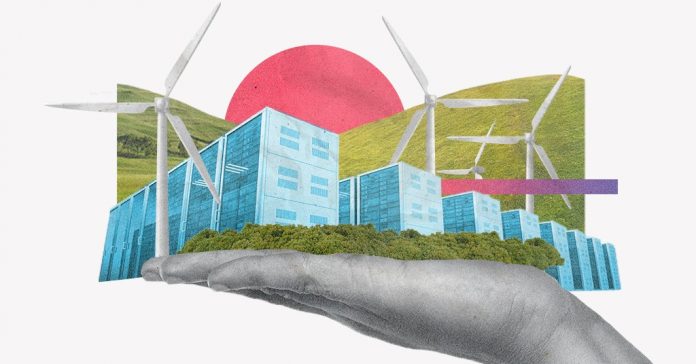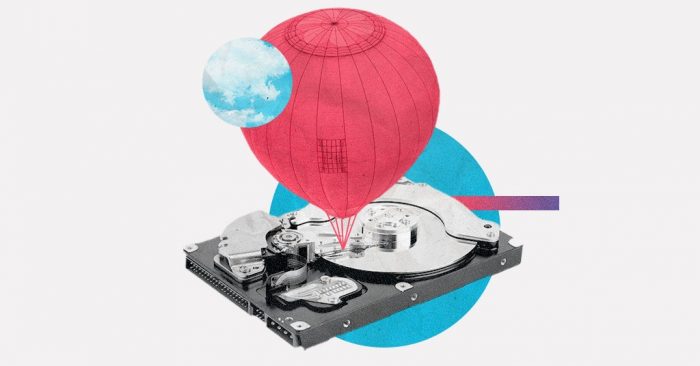Data center are among the largest consumers of power and electricity, using an estimated two percent of the world’s electricity and emitting roughly as much CO2 as the entire airline industry. As the amount of energy used by data centers continues to double every four years, they have the fastest-growing carbon footprint of any sector within the IT industry.
The acceleration of digital transformation will only increase the amount of data being captured, preserved, accessed and transformed. More intensive workloads from IoT to AI to smart cities and autonomous vehicles will only add to the current projections of 463 exabytes created per day by 2025. An analysis by Cambridge University suggests bitcoin mining alone uses as much energy as the entire country of Argentina per year. The heavy lifting is done in data centers. AI alone has the potential to increase data center use of the world’s electricity from 2% to 10% or even 15%. And with more connections than ever before, moving data around uses energy.
For the more than 8 million data centers worldwide, one of the toughtest challenges of housing increasingly massive amounts of data is managing costs and minimizing their impact on the environment.
The good news is data centers are taking steps to reduce their power consumption, energy costs, and, as an added benefit, their carbon footprints.
Cloud Titans Lead the Way
The so-called cloud titans are leading the way. In January, Microsoft announced its plan to become “carbon negative” by 2030. Amazon Web Services has committed to use 100% renewable energy by 2025. One metric companies like Amazon pay particularly close attention to is its Power Usage Effectiveness (PUE), which measures how effectively the compute equipment in a data center uses its power. Google announced its data centers run at better than 1.1 PUE across all of its data centers, well below the industry average, by using less energy than other data centers.
How are they doing it?
One of the biggest actions the cloud titans are taking is committing to renewable sources of energy, such as wind, solar, and water as opposed to fossil fuels. It turns out the cloud titans are the top purchasers of renewable energy and tech companies held five of the six top spots in the U.S. in 2019.
Another way is to move to cooler climates with more renewable energy sources, such as the Nordic countries. Many of the cloud titans have built energy hubs in Finland, Denmark, and Sweden for wind and solar farms.
Cool it Down
It takes a lot of energy to keep data centers cool, which are usually kept at average temperatures between 68 to 80 degrees Fahrenheit. Cooling accounts for approximately 30 to 50% of total energy consumption in a data center.Nevada, with incentives such as lower power costs and lower taxes, is a hot spot for data centers with some of the largest in the world. Although there are many data centers in warm climates like Nevada, several of the cloud titans have opened data centers in cooler places like Iceland.
“Not everyone can afford to add land or move to another climate,” said Clint Ludeman, director of enterprise HDD product planning at Western Digital. “But there are several ways for enterprise data centers to reduce power consumption and optimize efficiencies.”
Density Saves the Day: More Data, Less Power
Every data center relies on storage to accommodate massive amounts of data. Storage is essentially the backbone of the data center, and every drive that operates in a data center needs cooling, which takes a lot of power. One way to optimize efficiencies is to pack more density into a given space or, in the case of storage, use higher density drives.
Higher capacity drives can have dramatic impact on power efficiency.
“Workloads can be power-hungry, power modest, or need a slim power diet,” said Giorgio Ippoliti, a technologist in Field Applications Engineering, at Western Digital. “I/O patterns, transfer size, and the number of requests queued to the drive impact how much energy a solution will consume.”
Ippoliti helped create a recent comparison for a European scientific institute’s 22 petabyte data repository. The testing compared Western Digital’s previous-generation 12TB drives to the latest technology powering its 18TB SAS HDDs. 102 drives were placed in a Western Digital storage enclosure, the Ultrastar Data102 storage platform, optimized for Western Digital hard drives.
The results showed 50% more capacity but using 18% less power. “Western Digital engineers are making breakthroughs in algorithms, motors, and internal power supply improvements that keep pushing power down, even when capacity goes up,” said Ippoliti.
A Lighter Element
Another way to reduce power consumption with storage is to use helium-filled hard drives instead of air-filled hard drives. Because helium is one-seventh the density of air there is less turbulence inside the drive. This delivers myriad advantages such as fitting more disks in the same 3.5-inch form factor, less drag on the spinning disks, and ultimately lower power.
In a comparison of Western Digital’s 18TB helium-filled hard drives with 10TB air-filled drives, the 18TB drives (already giving 80% more capacity, optimizing rack space) bring greater power efficiency with 30% lower operating power and a 61% reduction in watts-per-TB.
Space Matters
Optimizing space impacts power consumption because real estate comes at a premium. Every floor tile and square foot must be optimized for maximum utilization.
In a colocation data center, where many companies can rent out rack space for storage servers and other equipment, factors such as slot tax can impact costs. If one company’s equipment consumes more power than what’s allocated to its space, they may need to rent additional floor space simply to pay for an additional power drop.
“There’s hidden TCO in optimizing existing space to the maximum utilization,” said Swapna Yasarapu, senior director of data center SSD Flash at Western Digital. It’s akin to the ‘negawatt’ concept, where there is energy savings from operating more efficiently and the power you did not spend money on.
Data Centers Have the Power
Data helps solve some of the world’s biggest challenges, but the physical resources needed to make that happen should not contribute to climate change. For data to truly takes us to a better place, data centers need to find ways to contend with the enormous power draw. It’s only possible for organizations to do more with data when they find efficient ways to store and access it. This means striving for a smaller footprint not only physically, but financially and environmentally.










